Packrafting on the Hayduke Trail: Plans, Routes, & Expectations
As part of the Hayduke Trail, I am planning (hoping) to packraft portions of the route in the interest of keeping things either interesting, novel, or less terrible; the Hayduke includes lots of bushwhacking next to rivers.
This will not be a whitewater packrafting adventure – despite part of my intended packraft taking place on the Colorado River in Grand Canyon National Park – and the waterways I am hoping to traverse via packraft are the Colorado River outside Moab, the Escalante River, and the Colorado River in Grand Canyon National Park.
Packrafting on the Hayduke will mean that I need to bring additional gear, making what I already expect to be heavy food and water carries even heavier. However, the fun(?) and ease with which I am able to cruise down the river should (hopefully) cancel out the added difficulty of carrying additional weight.
The Plan
The plan for packrafting on the Hayduke can be broken down into three sections: the Colorado River outside Moab, the Escalante River, and the Colorado River in Grand Canyon National Park.
I didn’t do a ton of research on packrafting alternates as this is primarily a backpacking trip and not a packrafting trip, but these three sections were the ones that jumped out at me as worthy avenues to pursue.
It’s likely additional/alternate packrafting options exist along the Hayduke (and perhaps I will discover some while I’m on the trail), but for now, these three are the focus of my planning.
Colorado River (outside Moab)
The first time I hope to get my packraft in the water on the Hayduke is just 28 mi / 45 km from the eastern terminus in Arches National Park.
Moab (map), the first town the trail passes through just south of Arches, sits on the Colorado River and provides easy access to a long stretch of flatwater. Hayduke hikers pass a boat ramp (map) just north of the town, but since I will be going into Moab to both resupply and to pick up my packraft (I plan to leave it with the hotel I’ll be staying at the night before I begin the Hayduke), my plan is to put in near Kings Bottom Campground (map).
From here, I have two options: 1) float the Colorado River approximately 19 mi / 30.5 km to 38°26’10.0″N 109°40’49.5″W (map) where I can rejoin the Hayduke or 2) float the Colorado River approximately 64 mi / 103 km to Spanish Bottom (map) where I can either rejoin the Hayduke or begin the Happy Maze Alternate.
Option two requires that I get a permit from Canyonlands National Park (the park boundary is just beyond the 19 mi / 30.5 km mark described in option one) for both the packrafting section and the Happy Maze Alternate. The alternate comes highly recommended but taking this route means that I won’t be actually hiking any of the Hayduke until near the end of Section 3 of the trail (there are 14 sections total).
I’m unsure if I will continue to Spanish Bottom and take this alternate, but I will definitely be packrafting the first 19 mi / 30.5 km from Kings Bottom Campground.
Escalante River
The second section of the Hayduke I’m planning to packraft is approximately 26 mi / 42 km of the Escalante River located within Glen Canyon National Recreation Area. The Hayduke comes down Moody Canyon and meets the Escalante River at the confluence with Moody Creek. Then, I’ll follow the Escalante River to Coyote Gulch where I’ll exit west from the river and make my way up Hurricane Wash to Hole-in-the-Rock Road.
Apparently, this section of the Hayduke (along the Escalante) is typically a horrible bushwhack that many hikers opt to bail out early from via a route out of the canyon and up to Hole-in-the-Rock Road to the west. The packraft is a way to turn this from what could potentially be one of the lowlights of the trail (bushwhacking next to a river for days) into one of the highlights.
It looks like this section will be the most technical of the trip as far as the paddling goes, but there shouldn’t be anything too challenging (slow and rocky water more than big and scary water). The thing I’m most worried about is breaking my paddle or popping my raft in what I expect to be numerous tight squeezes through rocks (I know there’s at least one mandatory portage around a boulder jam). Good thing I’ll have a repair kit and lots of Gorilla Tape.
It appears that so long as the gauge for the Escalante River is reading above 1 ft, I should be alright to make it down in a packraft.
Colorado River (Grand Canyon)
The final section of the Hayduke Trail I plan to packraft is the Colorado River in Grand Canyon National Park.
River permits for the Colorado River in Grand Canyon are notoriously difficult to obtain. However, on a backcountry permit issued by Grand Canyon National Park, users are permitted to travel up to eight river miles (12.8 km). I’m required to obtain a backcountry permit to travel in Grand Canyon and so I will, by extension, be allowed to packraft up to 8 mi / 12.8 km on the Colorado River.
Deciding how to divvy up my permissible distance is a bit tricky. I am not trying to run any rapids; instead, I am trying to avoid the most miserable bushwhacks. Much of the Hayduke through Grand Canyon National Park is on unmaintained (or nonexistent) trails which makes travel incredibly slow and frustrating at times. My objective is to cancel out the slow/frustrating travel brought on by my additional packrafting gear with pleasant floats that avoid the slow/frustrating foot travel next to the river.
The sections I’m planning to packraft are:
- Four miles north of the Little Colorado River to the Little Colorado River; basically just south of Nankoweap to the Little Colorado River with a portage around Kwagunt Rapid
- The four miles between Deer Creek (Falls) and Knab Canyon with portages around Doris Rapid and Fishtail Rapid
This means I will have to carry my packrafting gear for the entirety of Grand Canyon (instead of being able to send it home from the South Rim), but the second packrafting section (between Deer Creek and Knab Creek) sounds like it’s the more awful (and dangerous) of the two sections, so I guess I’m carrying my packrafting gear all the way through.
The Logistics
The logistics of packrafting sections of the Hayduke are complicated by my not wanting to carry my packraft and packrafting equipment for the entirety of the route. I could just make this all easier on myself and not packraft at all, but what would be the fun in that?
There would be far fewer logistical questions if I just carried all the gear for the whole Hayduke, but since I am also expecting to carry as many as ten days of food and ten liters of water at times, the additional 6.56 lb / 2.977 kg of packrafting gear I have will not be missed in the sections I’m not using it.
Here’s where I will be picking up, dropping off, and shipping ahead my packrafting gear along the Hayduke Trail.
- Moab: I will leave my packrafting gear at the hotel (to be determined which hotel this is) where I stay before beginning the Hayduke Trail. If I can’t find a hotel to leave it with, I will (hopefully) be able to leave it with an outfitter in town.
- Escalante: It’s likely that I will have to carry my packrafting gear from Moab all the way to Hole-in-the-Rock Road (following my paddle of the Escalante River) where I will hitch north to Escalante, Utah to resupply.
- Kanab: From Escalante, I will mail my packrafting gear ahead to Kanab, Utah. I then have to cover 177 mi / 285 km of the Hayduke before hitchhiking to Kanab (via US 89 to the east) to resupply and pick up my packrafting gear for Grand Canyon National Park. Ideally, I would be able to ship my gear to Jacob Lake, Arizona instead, but they have stopped accepting hiker resupply packages.
- Kanab: After exiting Grand Canyon National Park, I’ll hitchhike to Kanab again (this time via AZ 389 to the west) and mail my packrafting gear home.
The Gear
There are three main pieces of gear (and a bit of repair gear) I am bringing with me on the Hayduke to facilitate the packrafting portions of the trail.
- Alpacka Raft Scout 3.6 lb / 1.63 kg
- Supai Adventure Gear Olo Packraft Paddle 14.5 oz / 411 g
- Astral Airbelt 2 PFD 12 oz / 340 g
- Alpacka Raft Inflation Bag 5 oz / 142 g
- Alpacka Raft Basic Repair Kit 1 oz / 28 g
- Cleanwaste GO Anywhere Toilet Kit Waste Bag 2.4 oz / 68 g
- Zpacks Dry Bag (M+) 0.81 oz / 23 g
Alpacka Raft Scout
The Alpacka Scout seems like the perfect balance between durability and weight that I’ll need for packrafting sections of the Hayduke. I plan to be paddling mostly flatwater with the chance for a small riffle or two somewhere on the Colorado River in Grand Canyon National Park. Because I expect there will be the potential for lots of bottom scraping and rock bumping on the Escalante River, I opted to go with the Scout instead of something less durable (but lighter), like the Alpacka Ghost.
Supai Adventure Gear Olo Packraft Paddle
Finding a lightweight packraft paddle was not easy. Fortunately, I found the Supai Adventure Gear Olo Packraft Paddle. It weighs less than a pound at just 14.5 oz (454 g); it is the only paddle I could find in this weight category. It breaks down into five pieces, is made from carbon fiber, and is made for flatwater which is exactly what I need for the Hayduke. Most importantly, it will work better than leaning over the sides of the packraft and paddling with my hands.
Astral Airbelt 2
As was the case with my paddle, I struggled a bit to find a lightweight PFD; then, I discovered the Astral Airbelt 2 Personal Flotation Device. I will not be bringing a PFD for the first section (outside Moab), but I will have one for the Escalante River and Colorado River in Grand Canyon National Park (it’s required in both these places). The plan is to use this only within the park (and not carry it elsewhere). The Airbelt 2 is a USCG-approved Type V PFD which means it meets the requirements. It weighs 12 oz / 340 g and inflates with a CO2 cartridge (or your mouth) when needed. Hopefully, I never have to inflate it, but it won’t hurt to have it.
Alpacka Raft Inflation Bag
As much fun as inflating the Alpacka Scout with my mouth every time I reach a new packraft section would be, the 5 oz / 142 g weight penalty of the Alpacka Raft Inflation Bag is well worth the additional weight. This is essentially a large sack that is attached to the inflation valve on the packraft to make inflation of the packraft easier. I’ve tried it out and it works a lot better than the similar bags you find included with some sleeping pads (which are typically useless). For 2 oz / 57 g more I could have gotten the Pak-A-Pump, but I feel like I’m already playing it too loose with the weight I’ll be carrying.
Alpacka Raft Basic Repair Kit
Worst case scenario? Other than dying? I carry the Scout for days to reach my packrafting destination and then immediately put a hole in it. Carrying an Alpacka Raft Basic Repair Kit is well worth it. I’ve been in situations in the past where carrying something small would have made a huge difference but I decided to leave said small thing behind in the interest of “saving weight”. There will be no weight saving on the Hayduke, only preparedness.
Cleanwaste GO Anywhere Toilet Kit Waste Bag x 3
One of the joys of river running? Packing out your poop. When traveling in the Escalante River corridor – whether you’re backpacking or paddling – you’re required to pack out all solid human waste (that means poop). If you’re only planning to make one or two poops whilst in the backcountry, a simple wag bag may do, but if you’re going to be out for longer, a system like the Cleanwaste GO Anywhere Toilet Kit Waste Bag will get the job done.
2.4 oz / 68 g (each)
Clean Waste Toilet in a Tube
Despite having a backpack made with waterproof material and a waterproof pack liner, I’m not taking any chances with some of my gear (particularly my camera which usually lives on the exterior of my pack). A Zpacks Medium-Plus Dry Bag will give me enough space to add an extra layer of protection to the gear inside my pack. I expect that my pack will get completely soaked at times (and will hopefully never be submerged).
The Hope
As well planned as I believe myself to be, I am sure that some of this will change, go wrong, or blow up in my face, but that’s part of the fun of being out on an extended backcountry adventure.
The idea of packrafting parts of the Hayduke Trail feels like it might not be worth it – even a bit contrived at times – but I am confident that each time I find myself sitting comfortably in my packraft instead of bushwhacking next to the river, I’ll be happy to have made this decision.
I’ll be following this up with a report on how everything turns out and whether I make/would have made any changes to what I’ve outlined here. If you’ve packrafted, paddled, or otherwise navigated the Hayduke-adjacent waterways before please leave a comment below and let me know if I’m missing anything!







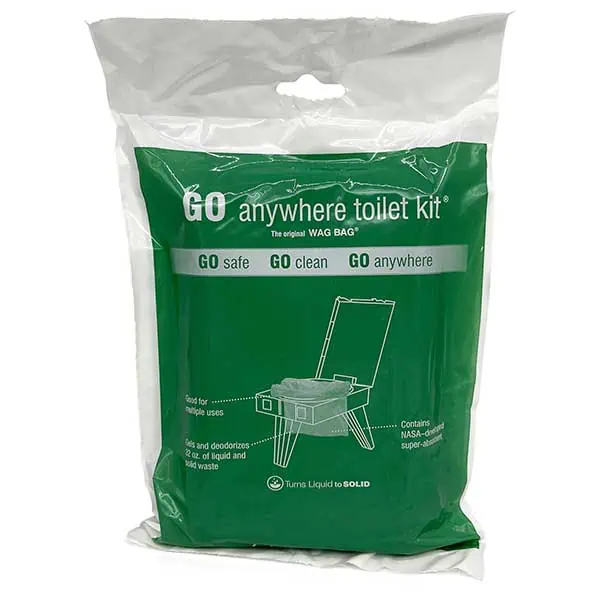
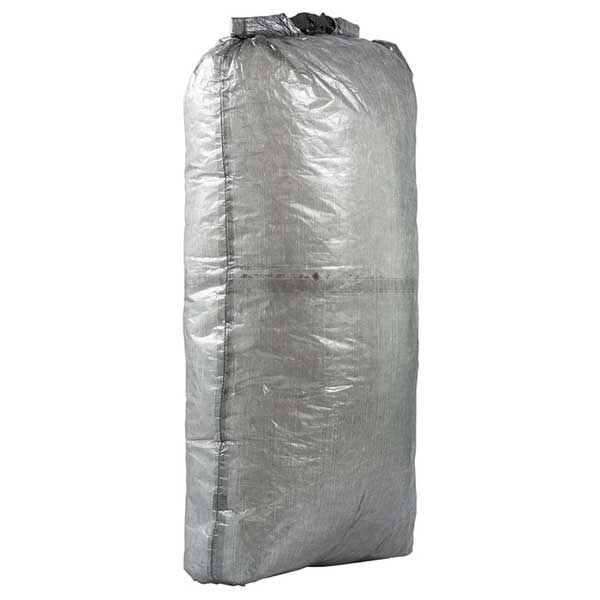


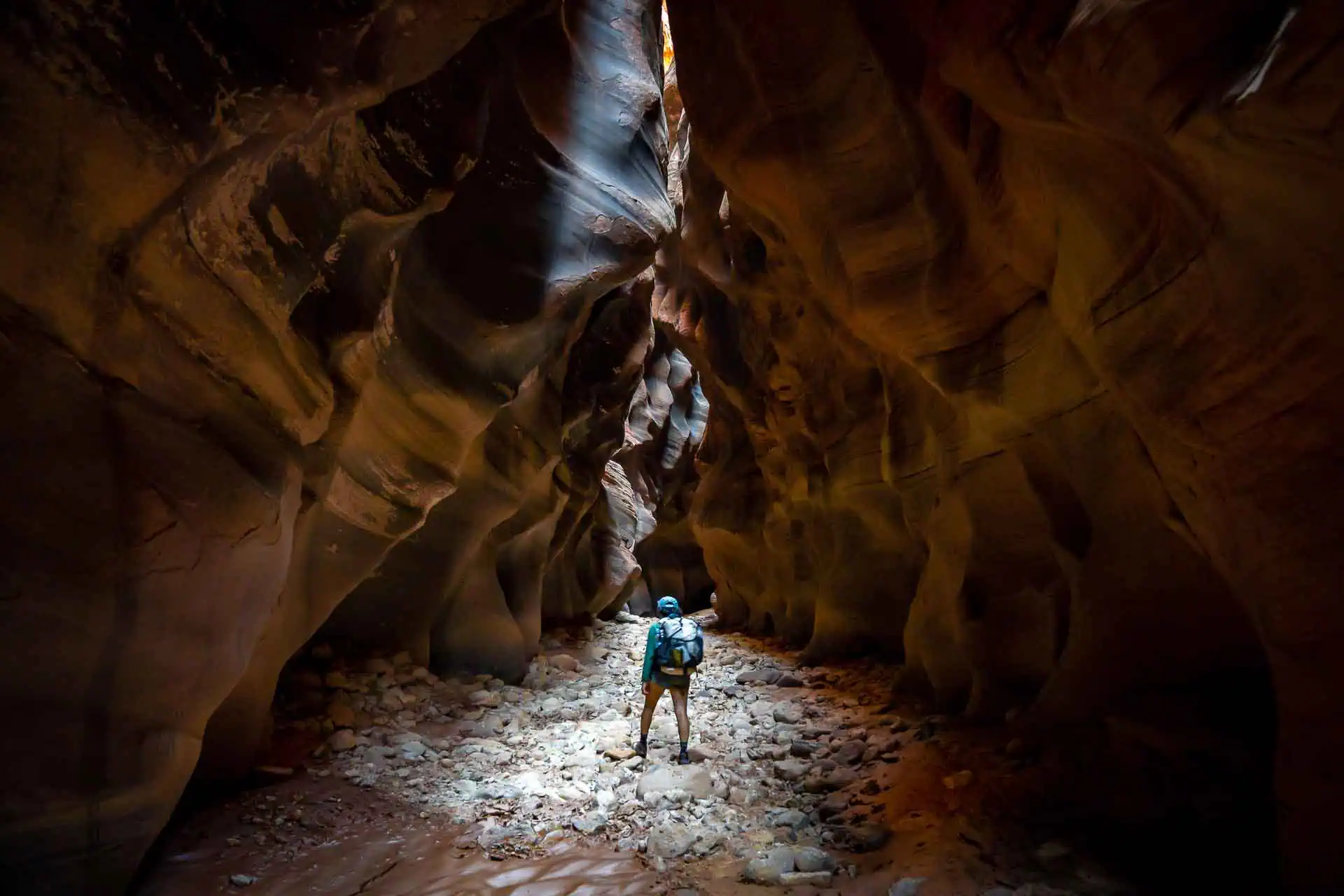

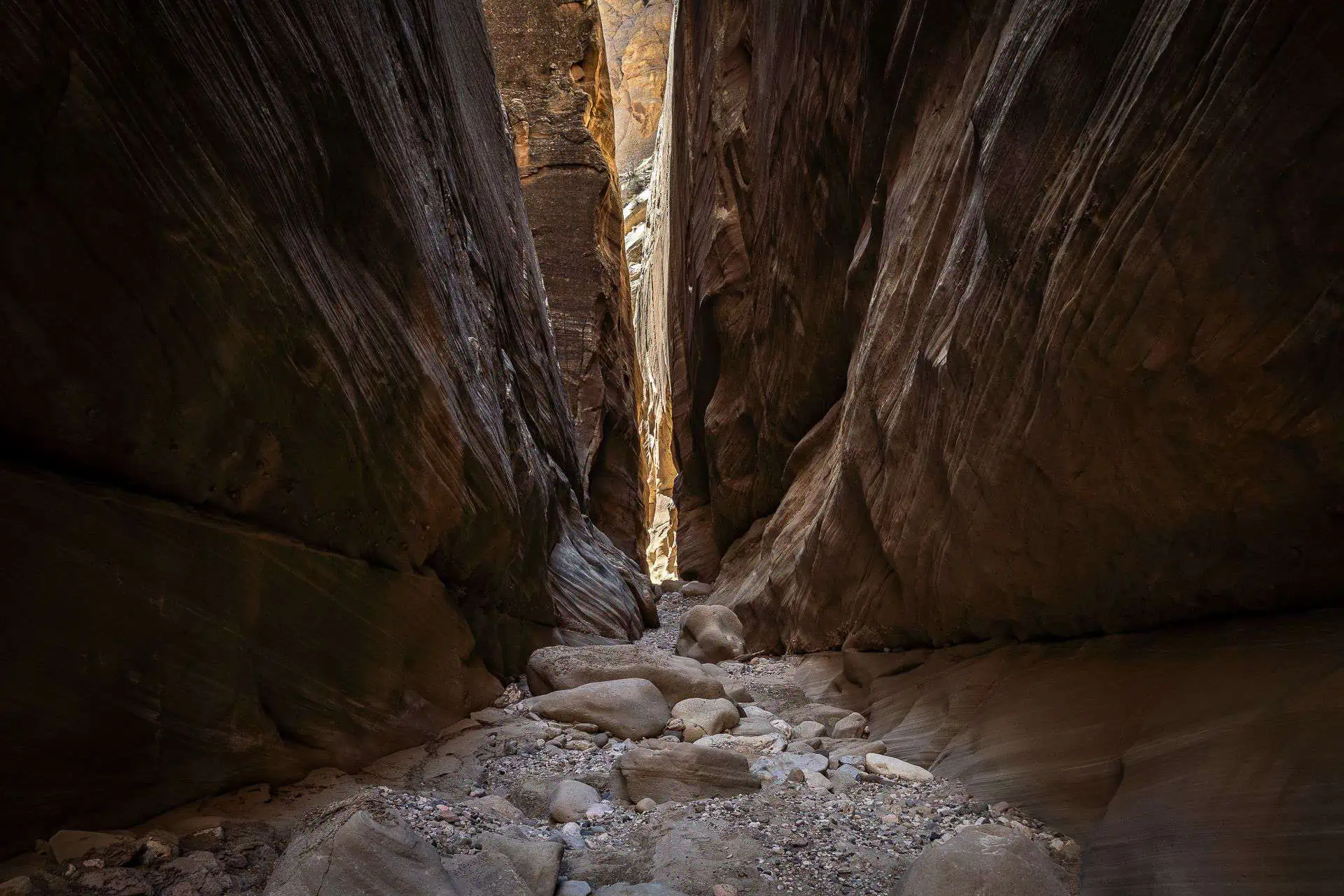
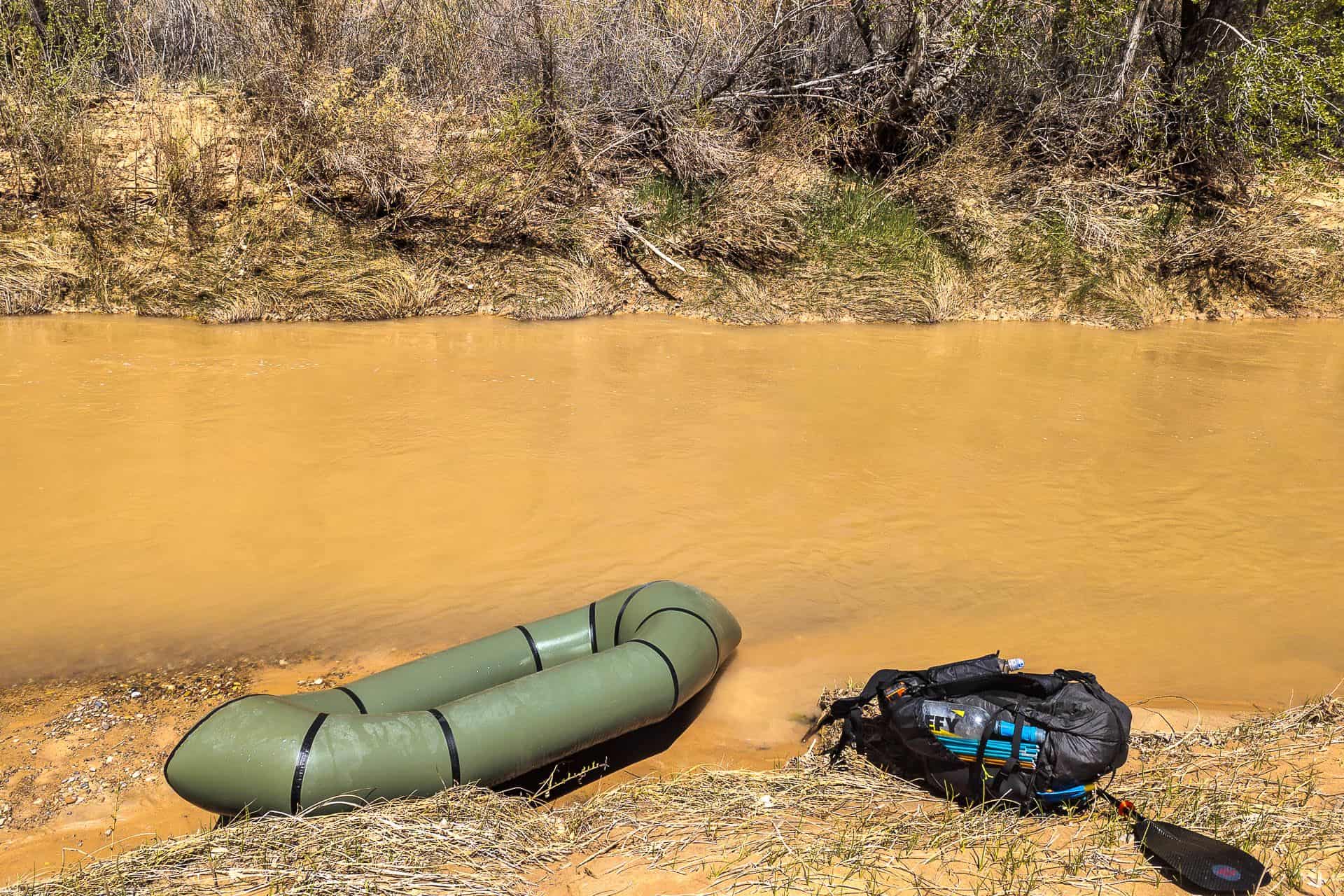
Great write up. Did you end up portaging around Doris and ‘Fishtail? How were the portages there?
I didn’t packraft that section ultimately; I point you to this follow-up post:
https://www.halfwayanywhere.com/trails/hayduke-trail/packrafting-on-the-hayduke-dont-do-it/
Mac! My sister and I met you while you were descending the Nankoweap Trail. I was the AZT thru-hiker that used the Horse Thief Route to bypass the North Kaibab closure. Just came across this article by chance and hope you finished strong and the Hayduke was awesome!
Hell yeah! I remember you two – good on you for taking the Nankoweap Alternate. What a great trail! Made it to the end of the Hayduke – would recommend!